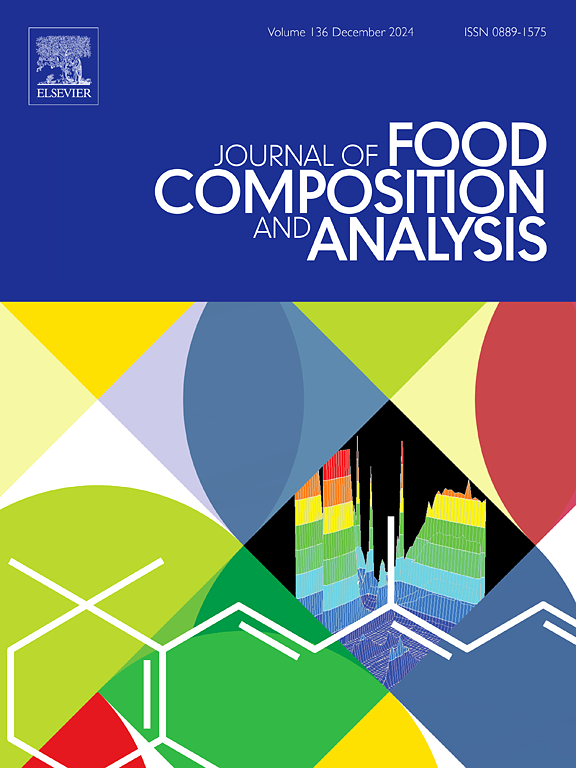Enzyme-free autocatalysis-driven DNA cascade circuits for amplified electrochemical sensing of Ochratoxin A in food
IF 4
2区 农林科学
Q2 CHEMISTRY, APPLIED
引用次数: 0
Abstract
Ochratoxin A (OTA) poses a great threat to food and environmental safety owing to its high toxicity. Herein, we developed a sensitive electrochemical aptasensor that integrates aptamer, enzyme-free DNA circuits, and electrochemical technology for OTA detection. In the presence of target OTA, the aptamer recognition first initiated the EDC circuit to releasing DNA (T2) from a ternary DNA complex (S-O-T2). The released T2 as the trigger to activate the CHA circuit and expose amounts of G-quadruplex sequences on modified electrode surface. Eventually, hemin was embedded in the G-quadruplex structure and generated an amplified electrochemical signal. Under optimal conditions, this developed biosensor is capable of detecting OTA ranging from 1 pg/mL to 10 ng/mL with a low detection limit of 0.135 pg/mL, which could be contributed to the design of target-triggered EDC and CHA cascade amplification. Additionally, the proposed biosensor was applied to analyze OTA in corn samples with satisfactory results, demonstrating that the proposed method has great potential in food safety and environmental monitoring.
求助全文
约1分钟内获得全文
求助全文
来源期刊

Journal of Food Composition and Analysis
工程技术-食品科技
CiteScore
6.20
自引率
11.60%
发文量
601
审稿时长
53 days
期刊介绍:
The Journal of Food Composition and Analysis publishes manuscripts on scientific aspects of data on the chemical composition of human foods, with particular emphasis on actual data on composition of foods; analytical methods; studies on the manipulation, storage, distribution and use of food composition data; and studies on the statistics, use and distribution of such data and data systems. The Journal''s basis is nutrient composition, with increasing emphasis on bioactive non-nutrient and anti-nutrient components. Papers must provide sufficient description of the food samples, analytical methods, quality control procedures and statistical treatments of the data to permit the end users of the food composition data to evaluate the appropriateness of such data in their projects.
The Journal does not publish papers on: microbiological compounds; sensory quality; aromatics/volatiles in food and wine; essential oils; organoleptic characteristics of food; physical properties; or clinical papers and pharmacology-related papers.
文献相关原料
公司名称
产品信息
阿拉丁
tris(2-carboxyethyl) phosphine (TCEP)
阿拉丁
6-mercapto-1-hexanol (MCH)
阿拉丁
Ochratoxin A (OTA)
阿拉丁
dimethyl sulfoxide (DMSO)
阿拉丁
potassium chloride (KCl)
阿拉丁
magnesium chloride (MgCl2)
阿拉丁
sodium chloride (NaCl)
阿拉丁
tris (Tris)
阿拉丁
Sodium hydroxide (NaOH)
阿拉丁
Ochratoxin B (OTB)
阿拉丁
Ochratoxin C (OTC)
阿拉丁
Aflatoxin B2 (AFB2)
阿拉丁
Aflatoxin B1 (AFB1)
 求助内容:
求助内容: 应助结果提醒方式:
应助结果提醒方式:


